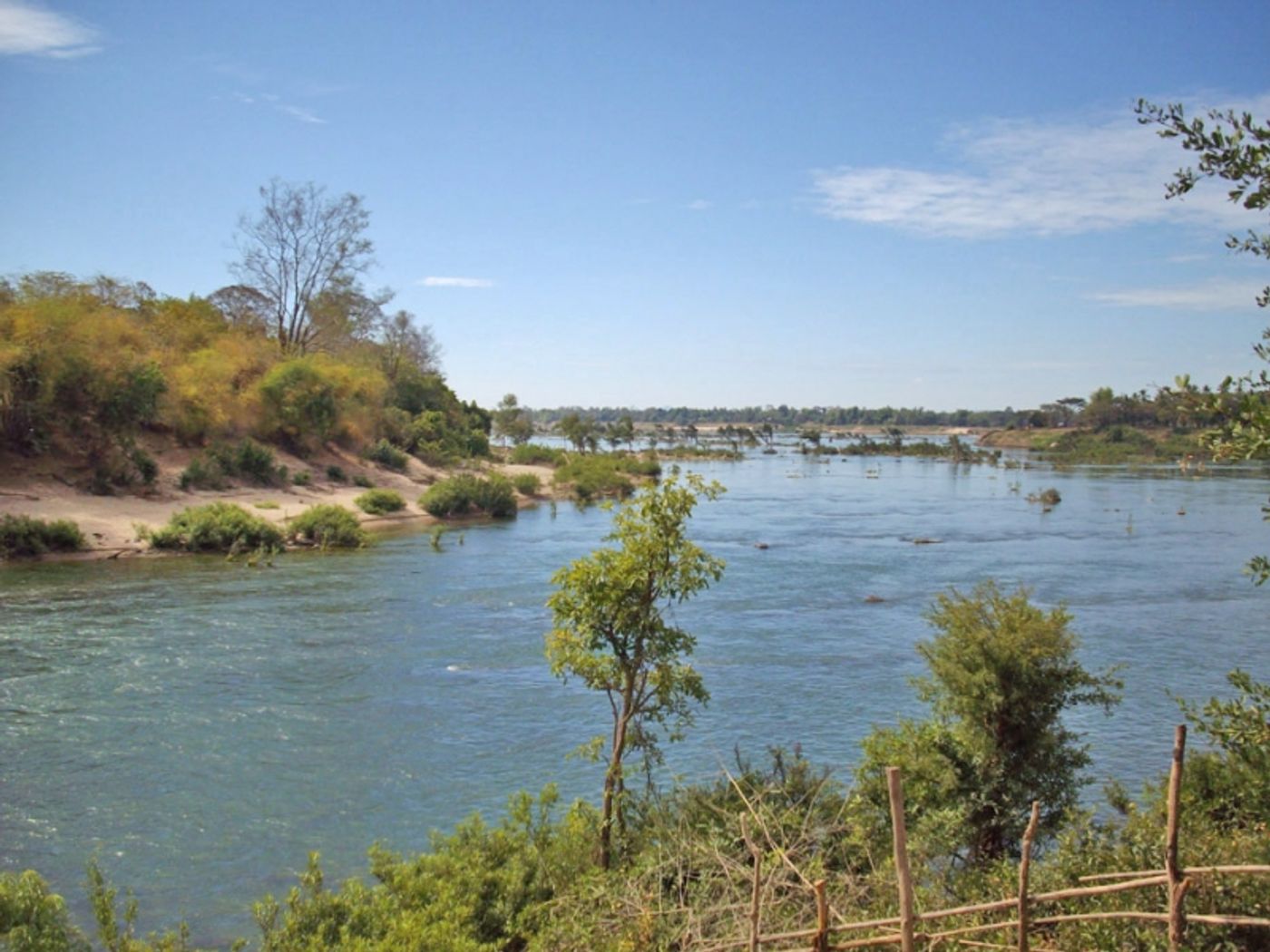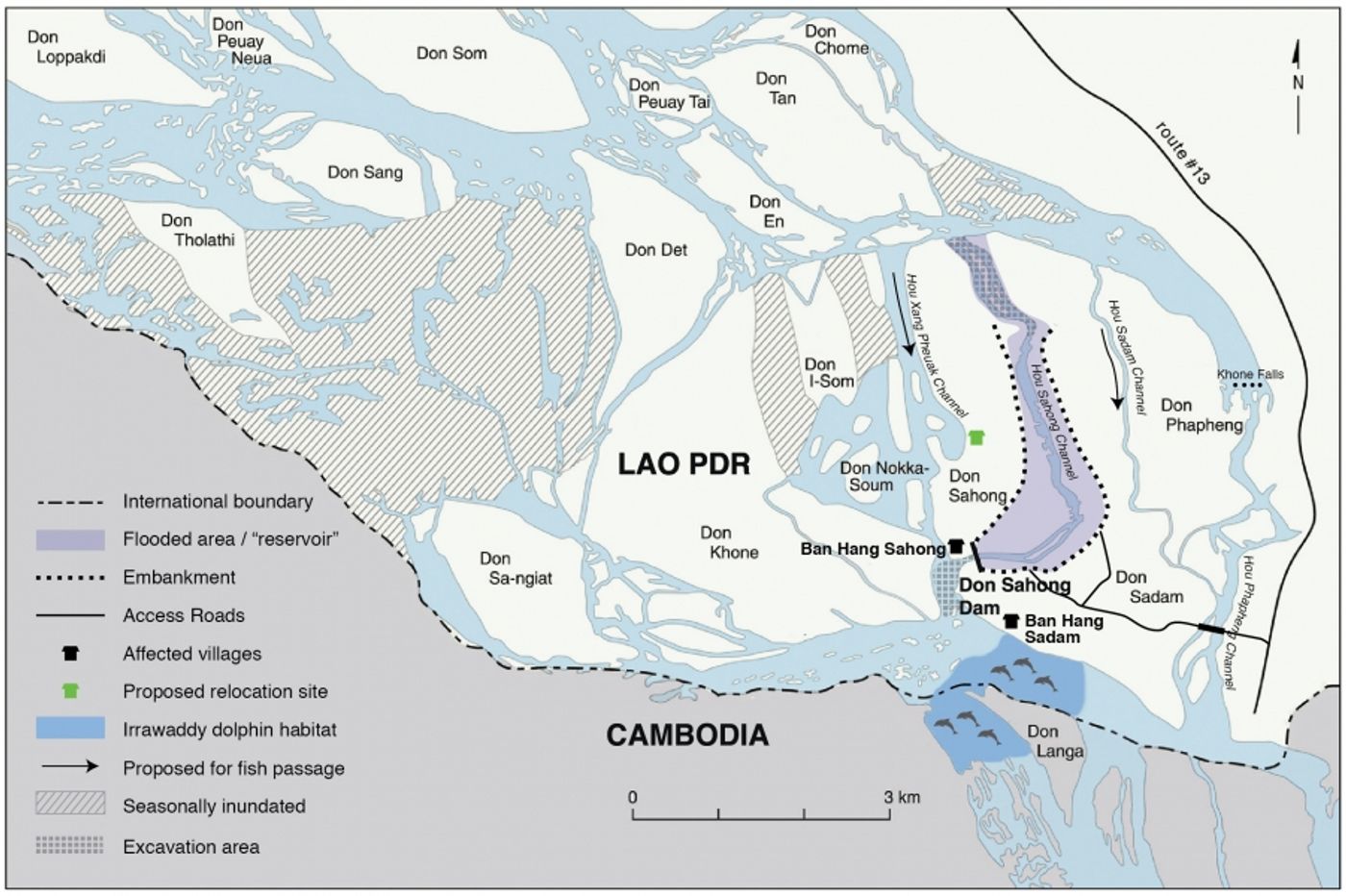Dam in Laos Stirs Up Controversy and Fish
Hydroelectric dams have become a hot topic in the last decade as biologists and environmentalists fight to make known the damages that dams have on river systems. The Don Sahong Dam along the Mekong River passing through Laos is facing controversy for just that reason between environmentalists, local residents, and the hydroelectric company behind the project, foreign power Mega First Corporation Berhad of Malaysia. Despite growing research that suggests that large hydropower dams emit unacceptably high greenhouse gas emissions in exchange for low economic returns, the biggest issue behind the dam actually concerns fish, not carbon.
The dam is planned for the Siphandone (Khone Falls) area of southern Laos, which also controversially happens to be less than two kilometers upstream of the Laos-Cambodia border. The habitat in the Siphandone is a beautiful riparian island river system, and provides the main channels for fish migrating between Cambodia, Laos and Thailand. Although the Don Sahong is by no means the only dam on the Mekong, its proposed location would directly block the only stream passable by fish all year round. This presents a problem for many locals, who survive on subsistence fishing, as well as commercial fisheries in the Lower Mekong Basin.
Seventy percent of the 40 million people who live in the Lower Mekong Basin - that’s 28 million people rely “to some extent” on the approximately 850 species of fish there, according to Mongabay News. “Wild fish and other aquatic animals and plants make up over 80 percent of the animal protein the local populations consume. Fish scientists Eric Baran and Blake Ratner of World Fish in Cambodia estimate wild fish capture in the Mekong Basin nets around $2 billion per year,” reports Mongabay.
But the big problem? Following these ichthyologists, 86% of Mekong fish are migratory. Meaning they’re traveling up or downstream to complete life cycles for mating and spawning. This gets more difficult when successive dams block the river. The EIA carried out by the Malaysian company developing the project claims that the project “will not have significant impact on fisheries due to the proposed mitigation measures,” following a summary statement by International Rivers, who is fighting against the project. International Rivers explains that “the claims are based on models which have never been tested in the Mekong, and there are doubts as to whether they could be successful on such a large scale.”
There are also two other concerning factors. The first circles the worry that the dam would divert water from a popular tourist destination, the Khone Phapheng waterfall. People come to see the beautiful waterfall as well as the Irrawaddy dolphins (extremely endangered) that live below it and bolster the local economy. The second, according to International Rivers (IR), is that “local people have received misleading and incomplete information about the likely impacts of the dam from the project’s developers.” IR further reports that Cambodians downstream from the dam have received even less information.
Despite all these red flags, Mega First Corporation Berhad plans to continue development of the dam in the coming months. To follow this story, keep up to date with International Rivers.
Sources: Mongabay News, International Rivers (1), (2), (3)










